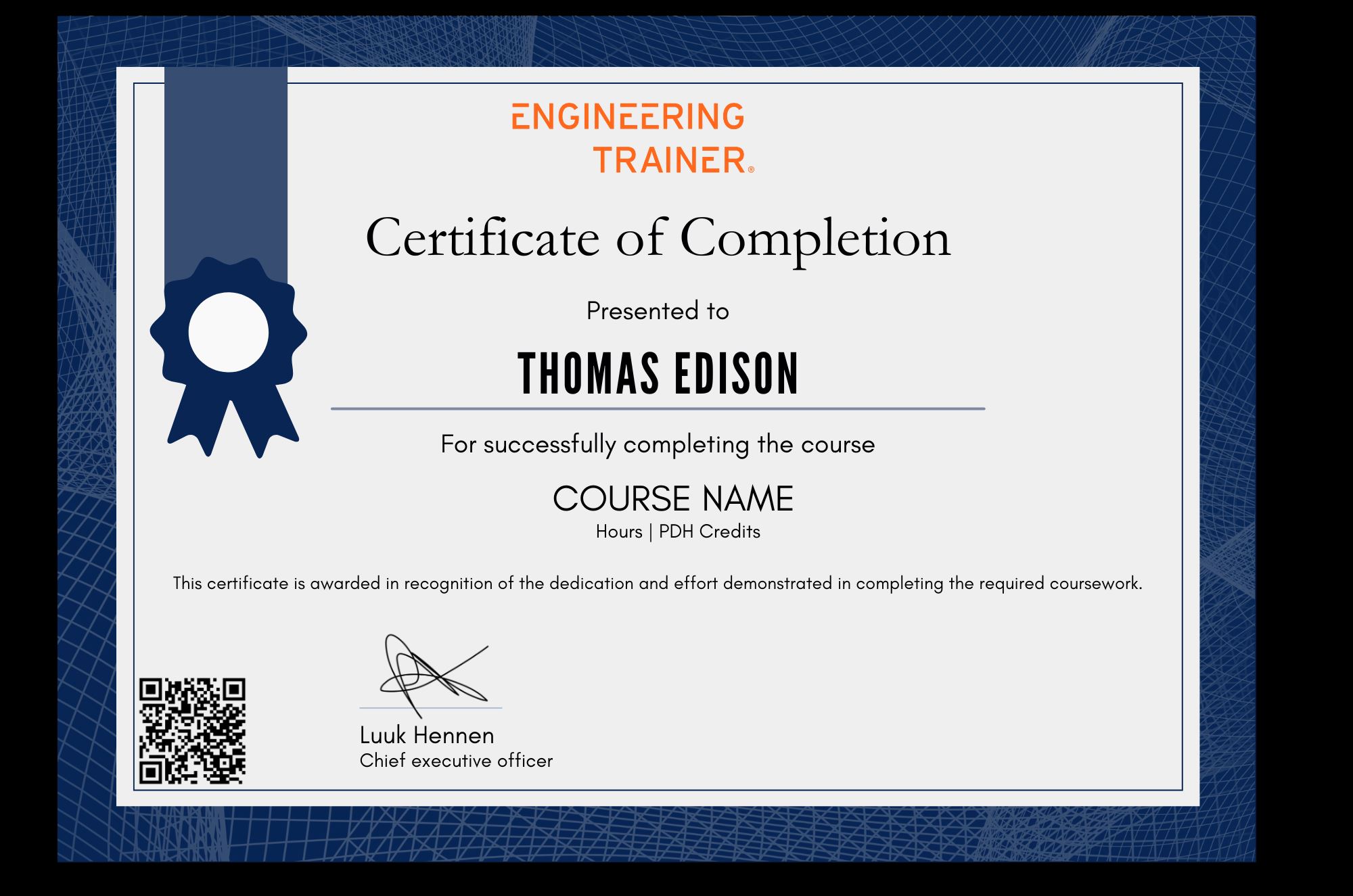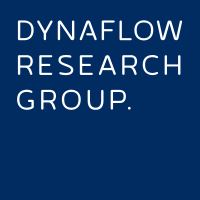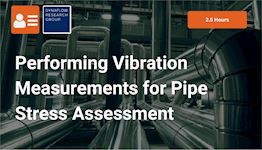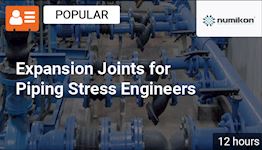Dynamic Stress Analysis of Industrial Piping Systems
Why take this course?
This self-paced course covers the fundamentals of dynamic stress assessment in piping systems. Through video lectures, case discussions, and demonstrations, participants learn theory, physics, and computational methods including Dynamic Load Factor, spectrum, and time history analyses. The course includes quizzes and offers a certificate with PDH credits to enhance practical engineering skills.
What you'll learn
After these courses, you...
• understand the different dynamic analysis techniques used by pipe stress software,
• have seen numerous examples of how these techniques are applied to assess pipe vibrations,
• are familiar with the theory and concepts behind modal analysis, time history analysis, harmonic analysis and spectrum analysis,
• are able to judge which technique is most suitable for your situation.
About the course
This course teaches you all the fundamentals of dynamic stress assessments of piping systems.
By means of presentations, demonstrations and discussions of cases you will learn the theory, physics and computational methods applied in modern day pipe stress assessments of dynamic phenomena.
Topics such as model analysis, Dynamic Load Factor (DLF), spectrum analysis and time history analysis are discussed in detail. Comparisons are made between the different techniques that allow you to judge which one is most suitable for your situation.
The course consists of 4 online courses based on video content.
Meet your instructor
Who should attend this course
• Pipe stress engineers that want to understand dynamic stress assessment for piping systems.• Users of CaesarII and other pipe stress software that have experience with static analysis.
• Pipe stress engineers that want to expand their knowledge into dynamic assessments.
• Those conducting dynamic stress assessments that want to deepen their understanding.
Prerequisites
Basic understanding of static pipe stress analysis is required.Program & Details
-
Welcome
1. Welcome & Your instructor
2. Content overview
3. How to use this course -
Course 1 - Understanding Vibrations in Piping Systems
1. Relevance of dynamic assessment
2. Types of vibrations in piping systems
3. Vibration sources in piping systems
4. Vibration allowables for piping systems
5. Typical analysis methods for vibrating pipes -
Course 2 - Dynamic Pipe Stress Theory
1. Concepts & definitions Part 1
2. Concepts & definitions Part 2
3. Modal analysis Part 1
4. Modal analysis Part 2
5. Dynamic Load Factor (DLF) Part 1
6. Dynamic Load Factor (DLF) Part 2
7. Quasi-static analysis Part 1
8. Quasi-static analysis Part 2
9. Pipe modeling for dynamic analysis
10. Pipe flexibility factors for dynamic analysis
11. Supporting structures for dynamic analysis -
Course 3 - Modal, Harmonic, Spectrum and Time History
1. Modal coordinates Solution method - part 1
2. Modal coordinates Solution method - part 2
3. Spectrum analysis Solution method - part 1
4. Spectrum analysis Solution method - part 2
5. Time history analysis Solution method
6. Analyzing water hammer Example - Part 1
7. Analyzing water hammer Example - Part 2
8. Harmonic analysis in piping systems -
Course 4 - Further Examples and Methods Comparison
1. Compressor loads Example - Part 1
2. Compressor loads Example - Part 2
3. Compressor loads Example - Part 3
4. Compressor loads Example - Part 4
5. Q-Static vs. Spectrum earthquake loading - Part 1
6. Q-Static vs. Spectrum earthquake loading - Part 2
7. Recap dynamic stress analysis -
Final Notes & Certificate
1. Congratulations
2. Course evaluation survey
3. Your Personal Certificate
4. Rate this course
5. Related courses
Certification

Dynamic Stress Analysis of Industrial Piping Systems
Library: Professional

Why choose EngineeringTrainer
-
Unlimited Team-wide Access
-
Advance Technical Competences
-
Courses by Industry Authorities
Since using EngineeringTrainer our internal mentorship has a much more matured character.
Logan Chapman - COO at Chapman Consulting Inc.






